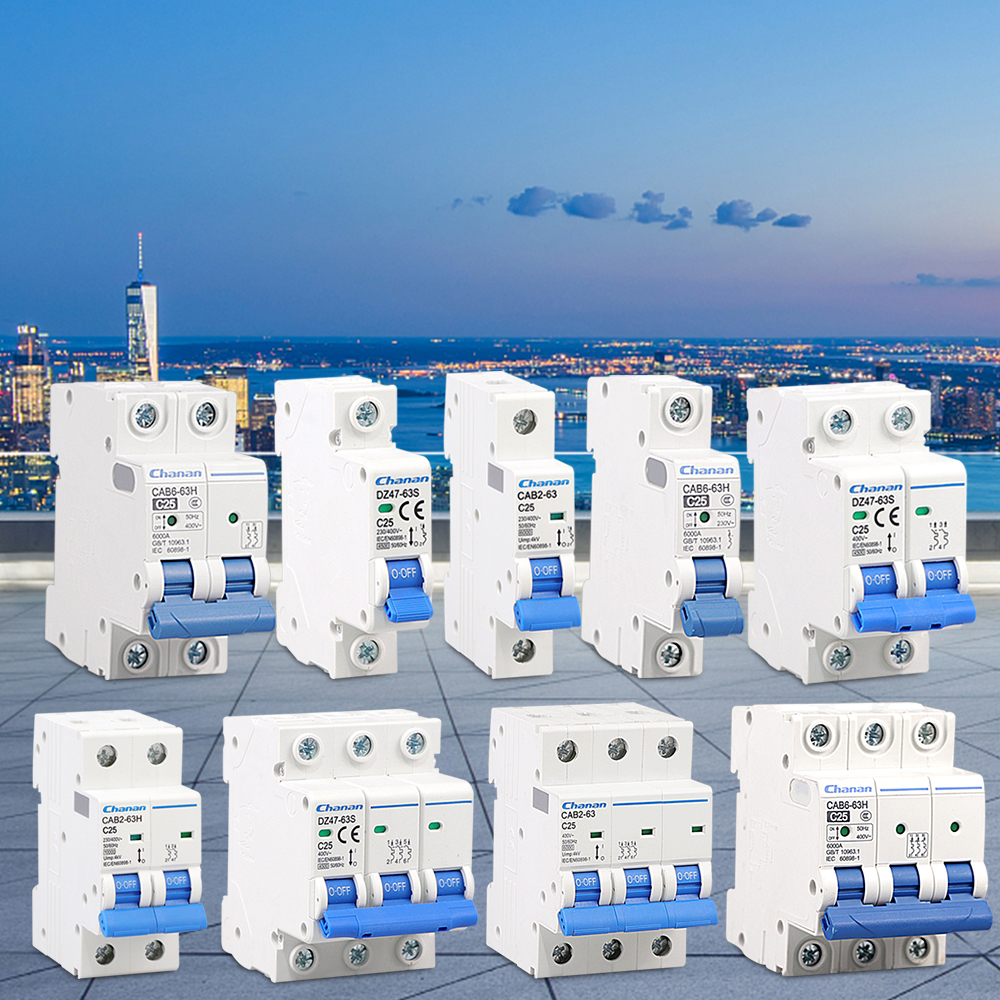Circuit Breaker (MCB)- A circuit breaker is an automatically operated electrical switch designed to protect an electrical circuit from damage caused by excess current, typically resulting from an overload or short circuit. Its basic function is to interrupt current flow after a fault is detected. Unlike a fuse, which operates once and then must be replaced, a circuit breaker can be reset (either manually or automatically) to resume normal operation.
Construction of Circuit Breaker (MCB)
An MCB embodies complete enclosure in a moulded insulation material. This provides mechanically strong and insulated housing. Incoming terminal, arc chute, bi-mental strip, magnetic coil, copper braid, ON/OFF switch, out-coming terminal.
Working Principle of MCB
The most important thing that circuit breaker is doing to safety and reliably switches off electrical circuit during abnormal conditions of the network, that means over load condition as well as faulty condition.
When the lever of a circuit breaker is switched to the “on” position, it allows electricity to freely flow from the power supply (typically the electrical panel or main) through the trip unit, contacts, and out the upper terminal to power the loads on a circuit.
A thermal magnetic trip unit’s bi-metal strip overheats in an event such as overload causing it to bend and open the circuit (automatically cutting off power). During a fault or short circuit, the electromagnetic force causes the contacts inside the circuit breaker to separate, tripping the breaker and shutting off the power to the circuit with the issue.
Types of Miniature Circuit Breakers (MCB’s)
MCBs are classified into three major types according to their instantaneous tripping currents. They are: Type B MCB, Type C MCB, Type D MCB.
Type B MCB
This type of MCB will trip instantly at a rate of three to five times its rated current. These are normally used for resume or small inductive loads where switching surges are very small. Therefore, these are suitable for residential or light commercial installations.
Type C MCB
This type of MCB will trip instantly at a rate of five to ten times its rated current. These are normally used for high inductive loads where switching surges are high such as small motors and fluorescent lighting. In such cases, type C MCBs are preferred to handle higher value of short circuit currents. Therefore, these are suitable for highly inductive commercial and industrial installations.
Type D MCB
This type of MCB will trip instantly at a rate of ten to twenty times its rated current. These are normally used for very high inductive loads where high inrush currents are very frequent. These are suitable for specific industrial and commercial applications. The common examples of such applications include x-ray machines, UPS systems, industrial welding equipment, large winding motors, etc.
If you have any questions about circuit breakers, please feel free to contact us.
Post time: Aug-08-2022

